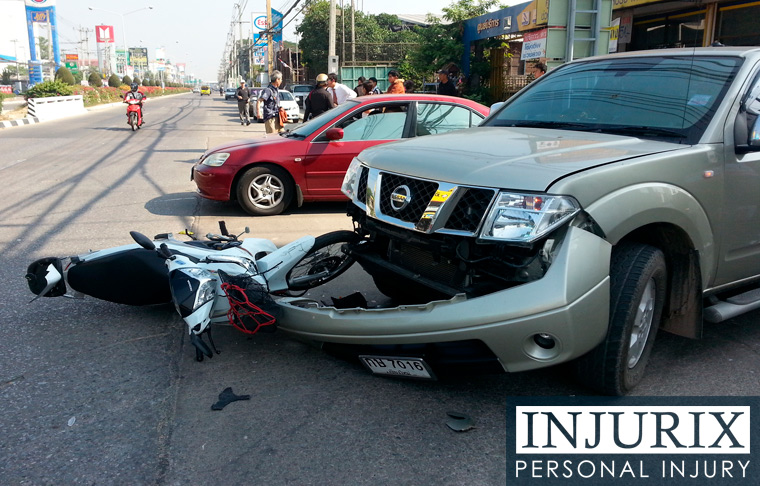
Motorcycle accident laws are not fundamentally different from those governing car accidents or any other type of personal injury case—at least in theory. In practice, an injured motorcyclist will have a harder time winning their case and getting a notable damage sum.
A cyclist that’s injured must prove 3 basic things in court:
1. The driver of the car in the accident was negligent—that is, they failed to abide the reasonable standard of care that would have been applied by an average person (as determined by the jury).
2. They suffered injuries because of that negligence.
3. Those injuries resulted in damages. Damages can either be tangible (fixed costs like medical bills and lost income) or intangible (pain and suffering).
That’s what it says on paper. In the real world of courtrooms and juries, it often plays out differently. The reason is that juries tend to have a bias against motorcycle riders.
Think about the reasons most riders love to be on their bikes. They have enhanced flexibility and maneuverability, enabling them to weave in and out of traffic. Those very traits are often annoying to drivers. The small bike size that makes it possible also makes cyclists harder to pick up by a driver changing lanes or making a left-hand turn.
Furthermore, statistics have shown that motorcyclists themselves are at fault in an accident more often than not. In theory, this shouldn’t affect the case where the cyclist was not at fault. But again, theory is not reality. These verdicts are made by juries who are heavily (if not entirely) made up of people who exclusively drive cars. They understand the fears drivers have of hitting a cyclist more than they understand the biker.
But saying that the bar is higher for motorcycle riders doesn’t mean it’s impossible to win a case. The median settlement for a motorcycle accident case is a little over $73,000. So clearly there are winners. And there are concrete steps that cyclists can take to enhance their chances in court; most of them take place before the accident ever happens.
It should go without saying that a cyclist must adhere to the safety regulations of their jurisdiction. This includes wearing a helmet and can include other safety measures like vests, other padded clothing and the quality of the lights for riding at night or at dusk.
Beyond that, states offer safety courses. The cyclists that take them can gain a notation on their drivers’ license that they have state endorsement to ride their motorcycle. An injured biker that comes into court with a state license and a proven track record of safe motorcycling stands better poised to win a sympathetic hearing from the jury.